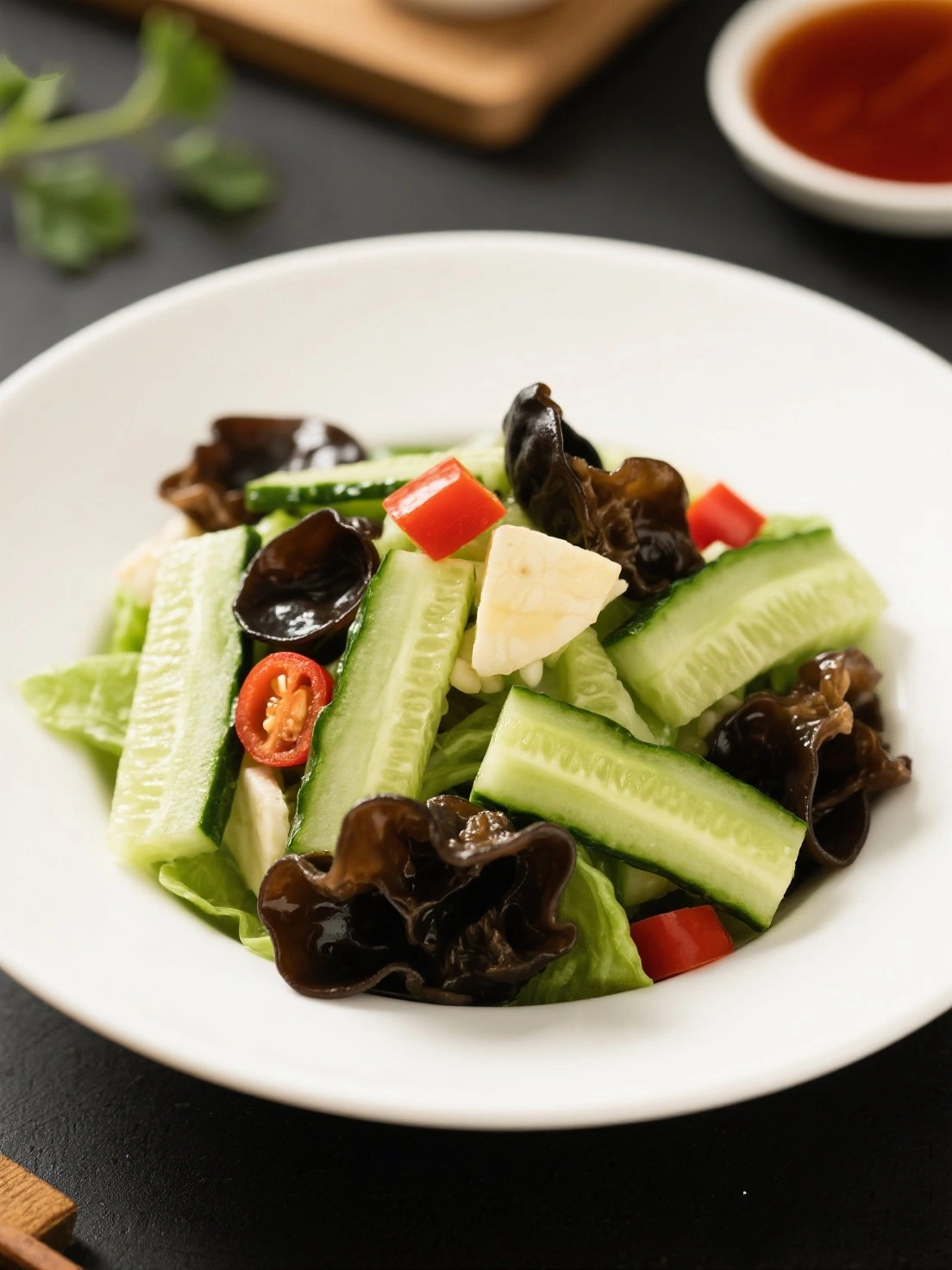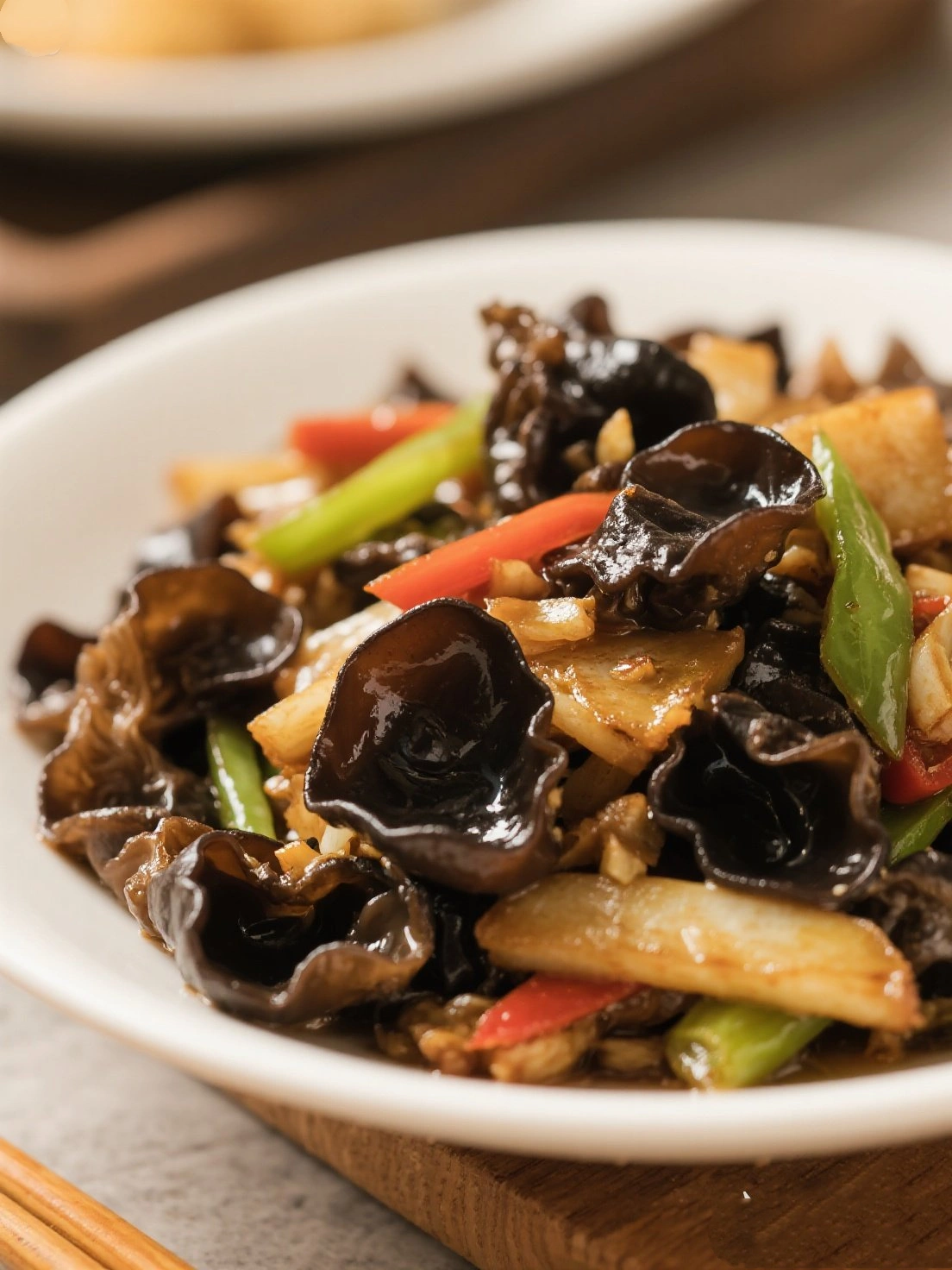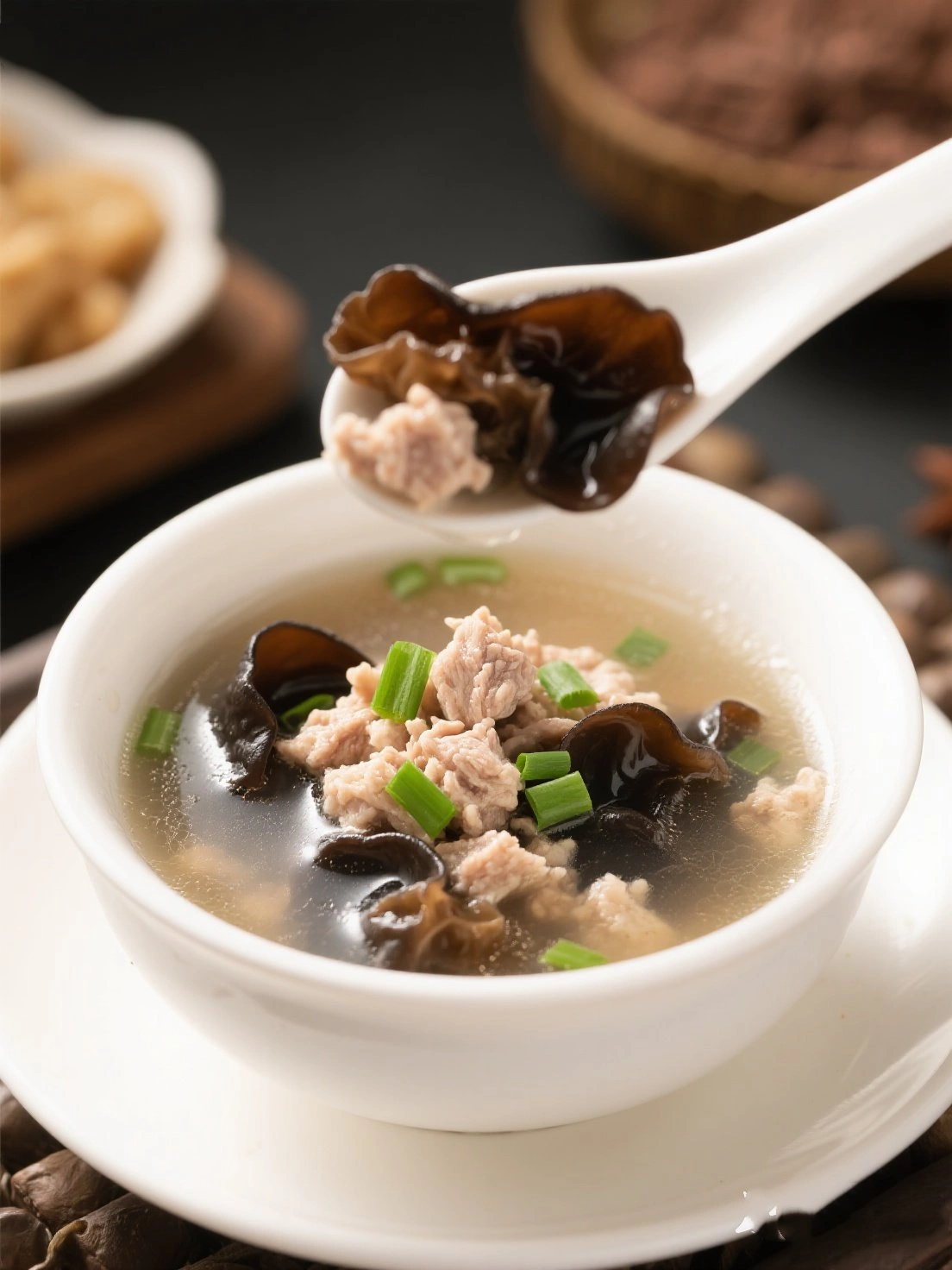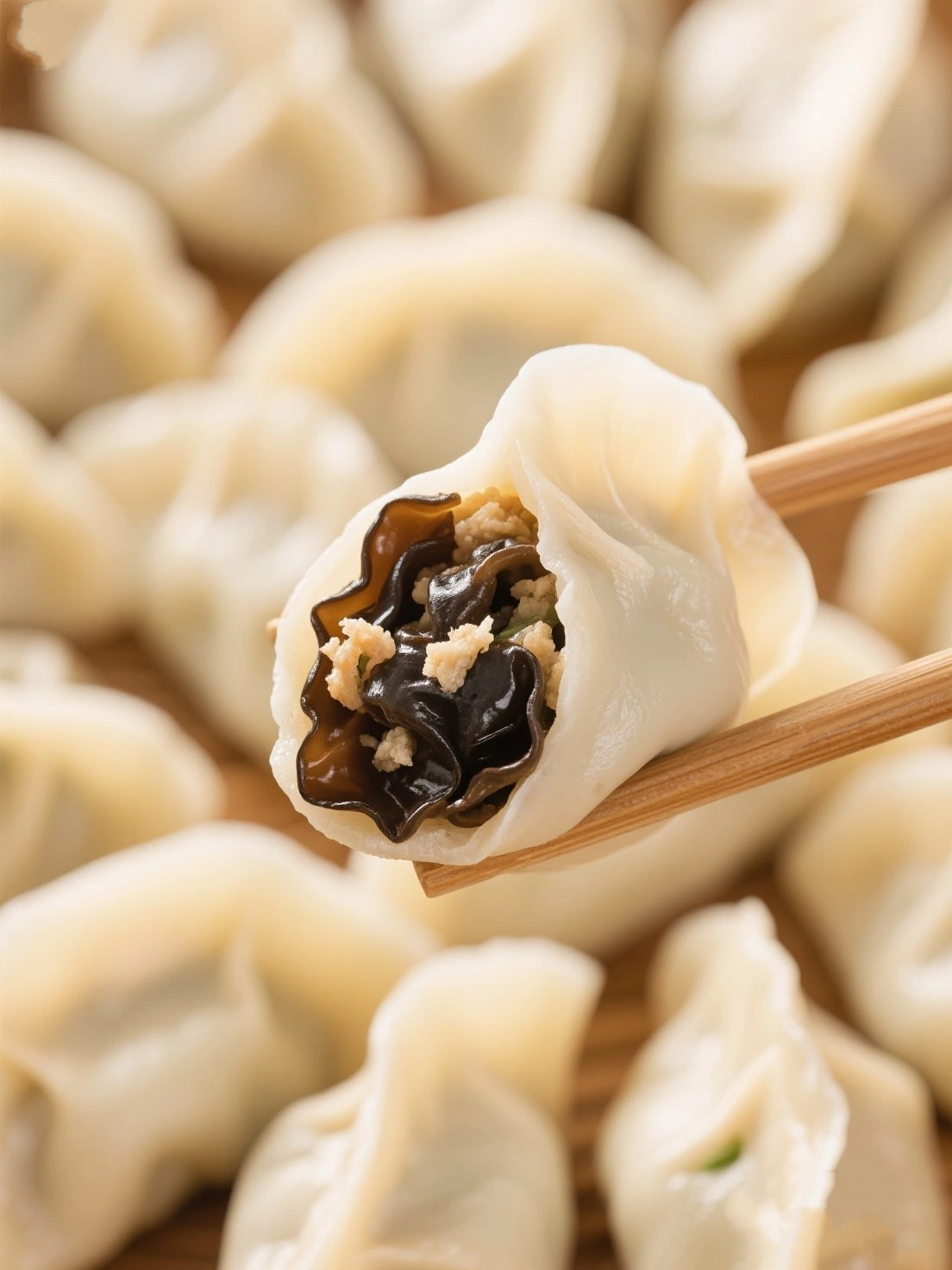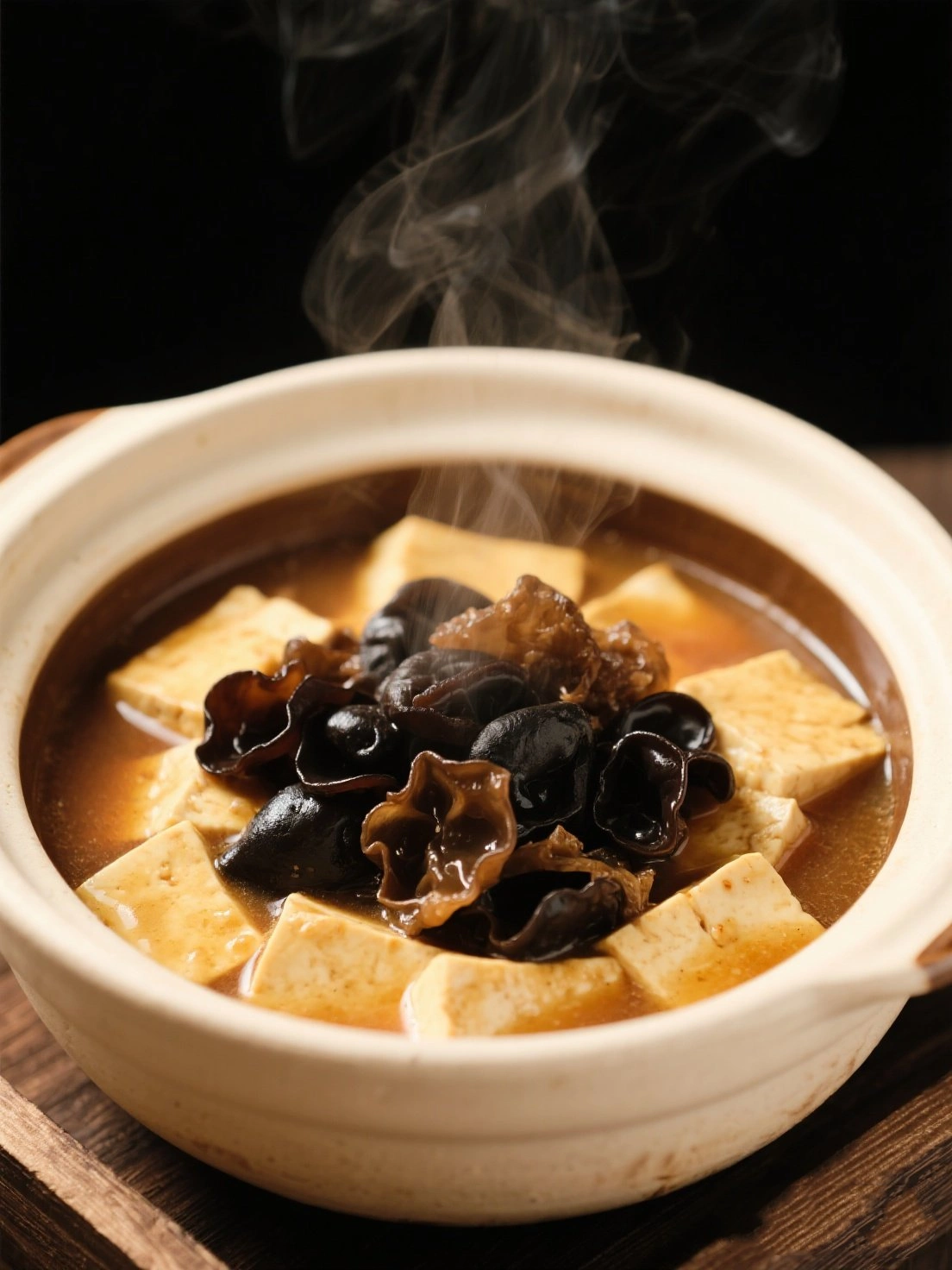Nutritional Value and Health Benefits of Black Fungus
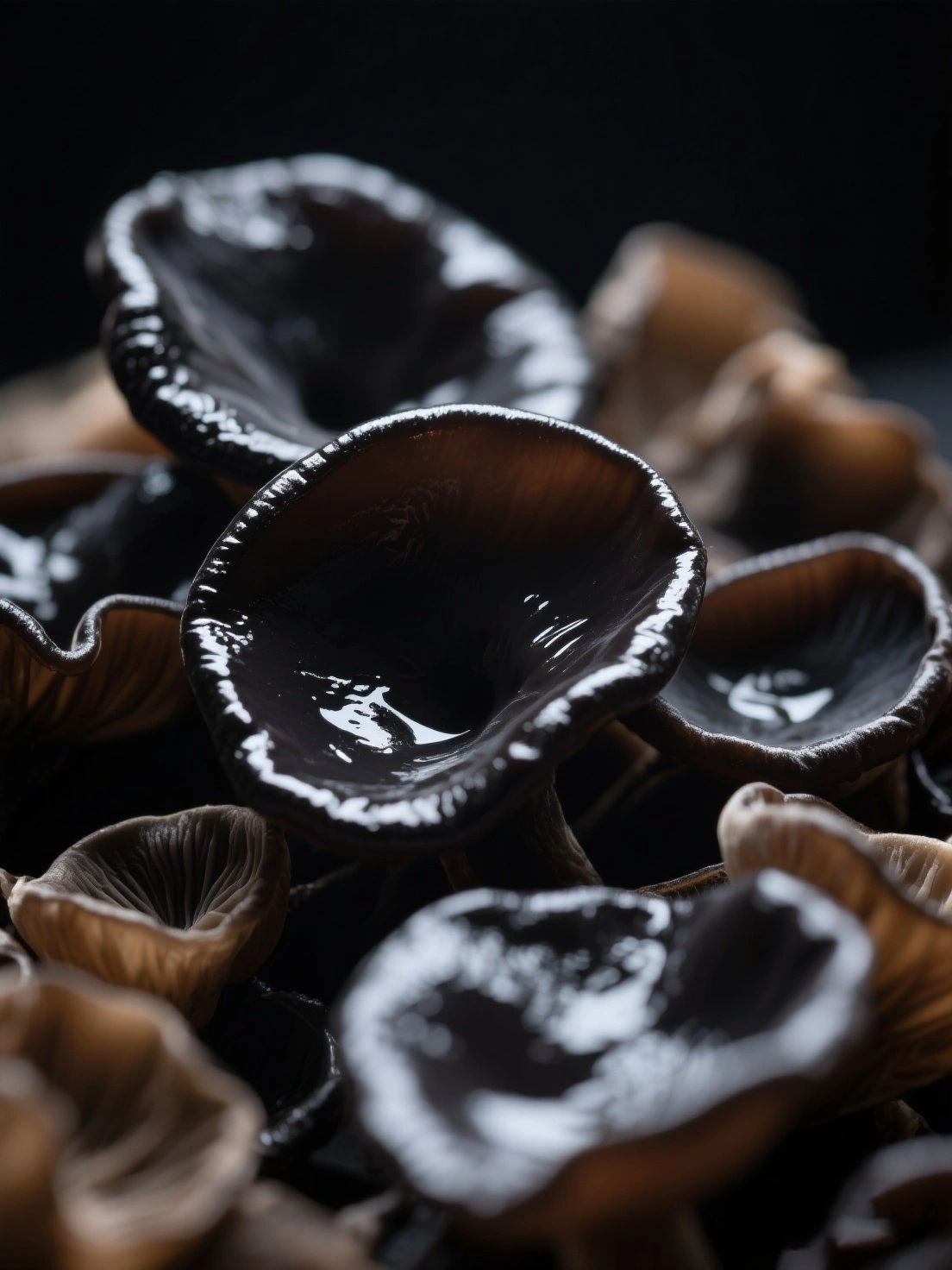
Nutritional Composition (per 100g dried black fungus)
- Calories: 284 kcal - energy-dense when dried
- Protein: 10.6g - complete plant protein
- Dietary Fiber: 70.1g - extremely high fiber content
- Iron: 5.5mg - about 30% of daily value
- Minerals: Calcium, phosphorus, selenium, zinc
Health Benefits
- 🌿 Rich in polysaccharides that boost immunity
- 🌿 Helps lower cholesterol and improve circulation
- 🌿 Contains compounds that may prevent blood clots
- 🌿 High in antioxidants that combat free radicals
- 🌿 Traditional use for lung and stomach health in Chinese medicine
Tip: Soak dried black fungus in warm water for 20-30 minutes before cooking. It expands 4-5 times its dried size when rehydrated.
Black Fungus Cultivation Process
1
Substrate Preparation
- Grown on hardwood logs or sawdust substrates
- Common host woods include oak and beech
- Substrate is sterilized to prevent contamination
2
Inoculation
- Fungus spores or mycelium introduced to substrate
- Done in controlled sterile environments
- Incubation period of 2-3 months
3
Fruiting Conditions
- Requires high humidity (80-90%)
- Optimal temperature 20-28°C (68-82°F)
- Needs indirect sunlight and good air circulation
4
Harvesting
- Ready to harvest in 3-4 weeks after fruiting
- Picked by hand when edges are slightly curled
- Multiple flushes possible from same substrate
5
Drying & Processing
- Sun-dried or mechanically dehydrated
- Can be sold whole or sliced
- Properly dried can last 1-2 years
Summary: Black fungus cultivation takes 3-6 months from inoculation to harvest. China produces over 80% of the world's commercial black fungus, primarily in Fujian and Heilongjiang provinces.
Black Fungus Farming
See how black mushroom is cultivated in modern Chinese farms
Delicious Black Fungus Recipes
From classic stir-fries to modern fusion dishes, discover the many ways to enjoy black fungus!
Black Fungus Recipe Video Tutorials
Watch these tutorials to prepare delicious black fungus dishes at home.
